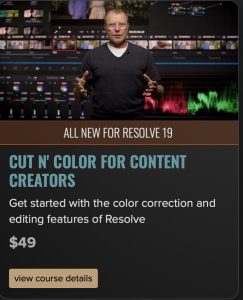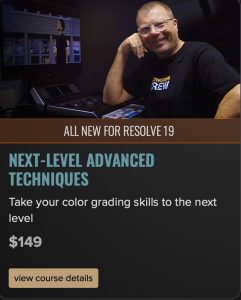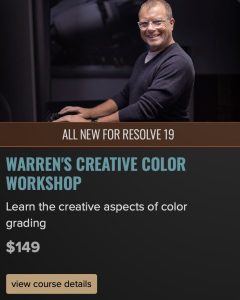My Resolve v19 training series has just been released in partnership with fxphd. I’m proud of what we have produced – it ain’t easy talking to yourself for 5 days straight!
The Color Grading landscape has changed a huge amount since 2006. No YouTube, no Mixing Light, the International Colorist Academy was still 3 years from formation, and the official Blackmagic Forum didn’t exist back then. Not many of my students had access to a daVinci 2k or a Resolve to practice on, so my students were mainly a mix of Apple Color/After Effects/Avid/FCP users looking for general tips. This is the story of how we got started.
Getting started
I first saw a demo of daVinci Resolve in 2005. It was a $400,000 system, the hardware rack was the size of a doorway, and it took a Resolve engineer two days to install. If a post house bought a system, then a trainer like myself would visit and conduct a 3-day session with their colorists.
In late 2005 I met with Mike Seymour and John Montgomery, who said they were opening a VFX online university. They asked me if I would like to be their professor of color. A professor! I had barely finished school, let alone gone to university. I didn’t really have any idea of the specifics or what I would even teach, but I’ve always been keen to try different things, so jumped at the chance.
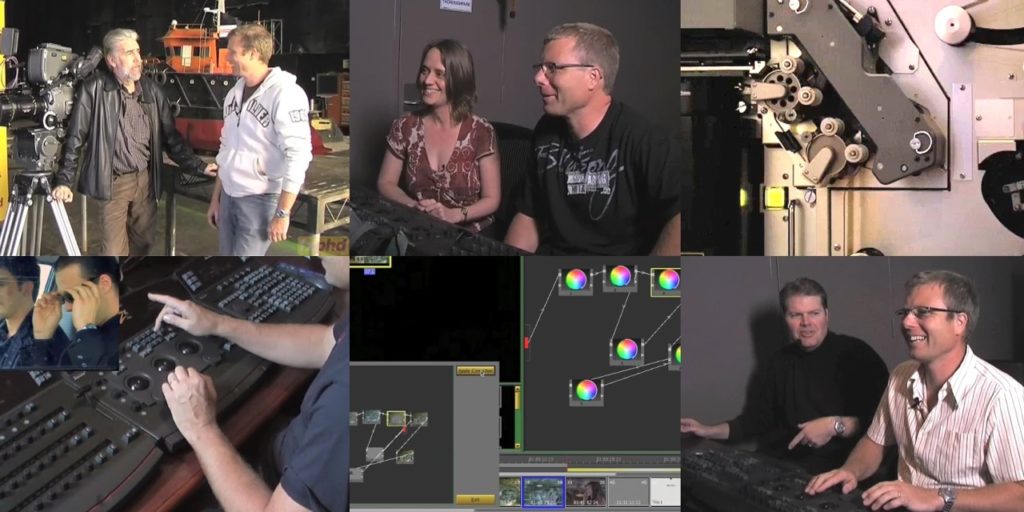
Images from the 1st fxphd color course in 2006
The first class
My first classes were released in 2006: 30 minute tutorial films released every week over a 12 week term. We decided to run the first 6 classes on a daVinci 2k plus color corrector. Fxphd didn’t own one, so we had to beg, borrow and steal from post houses in Sydney. The grading rooms were over $1000 an hour back then, so we had to be in and out very quickly, sometimes only shooting 2 lessons during their downtime. Having just about used up all our favours with Australian post houses, we luckily managed to secure a demo $300,000 Resolve Linux system, meaning we could mix things up and record 6 lessons on Resolve 6.
I wasn’t a facility owner so didn’t have my own system, meaning I had to do lots of prep on paper before shooting at the post house where we had made the booking. We didn’t want to make a simple screen recording with V/O class, so we used a mix of sources, including myself addressing the camera, GUI screen and grading monitor recordings were edited to make the final vision. Fxphd have always had high production values so we always dressed the set, shared good demo material, and shot with RED cameras, making things look as good as possible.
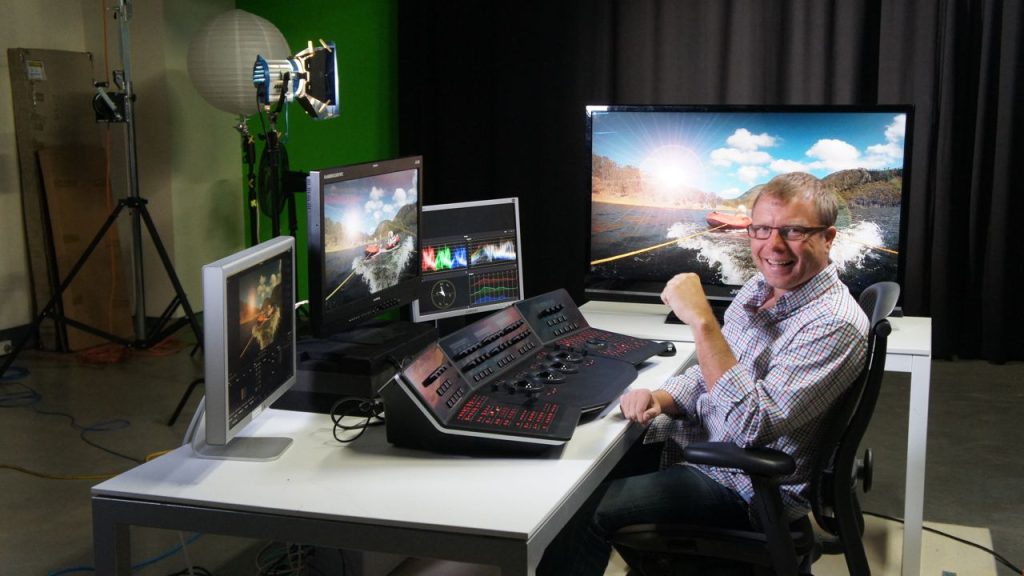
2013
The very first class was more of an introduction, where I chatted to my DP clients about the relationship of the Colorist and the DP. I think this relaxed feel and background info on the role of the colorist, always showing ‘why’, not just ‘how’, to do something is what people liked back in 2006. That set the tone of how I have always delivered my training: talking to the camera as if the student was sitting beside me in the grading bay.
New wave
With the release of Resolve 7 in 2010 my classes moved to the ‘Fast Forward’ section of fxphd where the student could download all 10 x 30min lessons, enabling the user to work on a particular technique straight away.
I then proceeded to make a brand new series every time a new version of Resolve was released. This obviously meant the training was current but also had the advantage of us using new locations, new media to give away, and above all I had new experiences to share.
When the pandemic occurred in 2020 I thought it might be time to retire from making films, but lots of folk said: “I loved your updates each year, you need to keep going”
So in 2021 we filmed Resolve 17 in a beautiful canal front house in Noosa, Australia. I stayed in the house allowing me rehearse at night and shoot during the day.
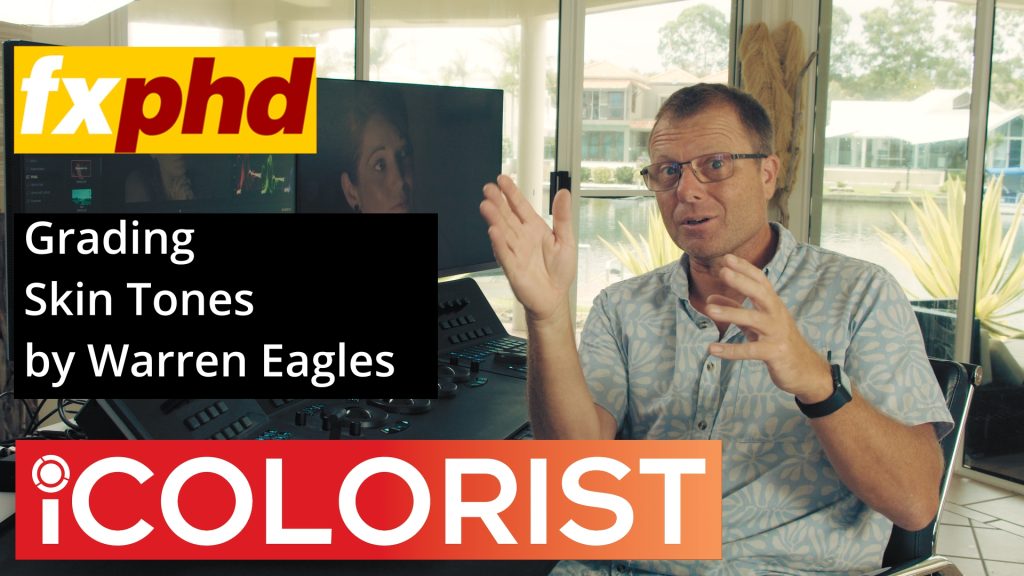
2021 Resolve shoot in Noosa
Fast forward to 2024 and the new v19 offerings are now available. 44 dovetailed classes from total newbie to experienced user. You get the classes,
the footage used and the most importantly the confidence to start grading your own projects.
More details here >
